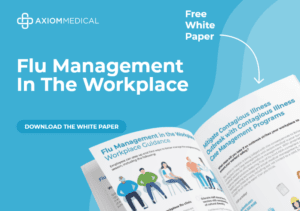A mission-driven safety culture is shaped by shared purpose. A strong vision can engage employees and transform safety protocol from something you have to do into something everyone wants to do. It weaves safety into daily operations, values, and leadership decisions.
1. Start with the “Why” — Anchor Safety in Purpose
Organizations often roll out safety initiatives focused on what to do or how to comply, but not enough time on why these initiatives matter. The most effective leaders start with purpose.
When safety connects directly to your mission, employees internalize it as part of their professional identity.
Examples:
- In healthcare, safety reflects compassion — protecting patients and colleagues alike.
- In manufacturing, it means sending every worker home safely, every day.
- In construction or energy, it’s about ensuring reliability in environments where a single oversight can ripple through entire systems.
Ask teams to articulate their “why” for safety in their own words. This reflection uncovers powerful emotional connections that sustain commitment far longer than any mandate.
2. Lead with Values, Not Just Compliance
Compliance is necessary, but it’s not motivational. Mission-driven leaders move beyond rule enforcement to value alignment — making decisions that demonstrate people matter more than production numbers.
Practical ways to lead through values
- Talk about safety as a moral obligation, not just a metric.
- Hold yourself to the same standards as your frontline teams.
- Publicly recognize proactive safety behavior.
These ideas aren’t just lighthearted fluff. When morale shifts, so do the metrics.
3. Involve Employees Early and Often
A mission-driven safety culture depends on enthusiastic collaboration. Employees must have a voice — not just a role — in shaping safety initiatives.
Encourage:
- Safety circles where workers identify hazards or suggest improvements.
- Peer-to-peer accountability that reinforces shared norms.
- Micro-feedback loops to close the gap between ideas and action.
This involvement drives ownership. People protect what they help build.
4. Recognize the Right Things
Traditional incentive programs can backfire when they reward “zero incidents” — sometimes discouraging employees from reporting problems. A mission-driven approach recognizes the behaviors that build culture: speaking up, mentoring others, and innovating safer processes.
Examples of recognition programs:
- Safety Innovator of the Month
- Quiet Hero Award for behind-the-scenes prevention
- Culture Champion for leading by example
Recognition rooted in purpose reinforces that safety isn’t just about what happens, but how people make it happen. Which is why Axiom has also recognizes top performers during our annual safety summit.
5. Storytelling: Turning Data into Meaning
Why do we tell children moralistic fairy tales? Because stories change behaviors.
When employees hear how one person’s quick thinking prevented harm, or how leadership protected a team, they see themselves in the story. Storytelling embeds values at the emotional level — and makes the mission feel real.
Encourage leaders to:
- Share reflections about near misses or lessons learned.
- Highlight employee-driven improvements in newsletters or meetings.
- Use stories to reinforce purpose — not fear.
6. Case Insight: When Purpose Drives Performance
At a mid-sized manufacturing firm, leadership realized that despite low incident rates, engagement was slipping. Safety felt “mandated.” They reframed their approach around mission — protecting each other like family — and made safety the centerpiece of every meeting.
They introduced a “Safety Purpose Board,” where employees posted photos of who they worked safely for (families, teammates, even pets).
Results within six months:
- Near-miss reporting increased 42%
- Employee satisfaction rose 17%
- Lost-time incidents dropped to zero
When people connect emotionally to safety, compliance naturally follows.
7. Avoid These Common Pitfalls
Even well-intentioned safety programs can falter. Watch for these traps:
-
- Treating safety as a campaign, not a culture. One-off initiatives fade without long-term reinforcement.
- Focusing only on metrics. Numbers matter, but stories sustain.
- Top-down control. Ownership grows when every employee shapes the conversation.
- Neglecting psychological safety. If employees fear blame, they won’t speak up.
- Forgetting the mission. Without meaning, safety becomes compliance fatigue.
8. Sustaining the Mission: From Compliance to Commitment
Building a mission-driven safety culture is an ongoing process of alignment, storytelling, and example-setting. Reinforce the mission at every touchpoint:
- Begin meetings with a short safety reflection.
- Integrate safety goals into performance reviews.
- Communicate wins publicly — and authentically.
When safety becomes part of how you operate — not just what you enforce — it transforms morale, loyalty, and performance.
FAQ: Mission-Driven Safety Culture
Q: What is a mission-driven safety culture?
A safety culture guided by purpose and values, not just compliance — where safety supports the organization’s broader mission.
Q: How can leaders measure its success?
Use both lagging (incident rates) and leading indicators — such as engagement, reporting frequency, and sentiment surveys.
Q: Does this approach work in all industries?
Yes. Mission-driven safety scales because it’s based on human motivation — not regulation.
The Mission Is the Message
Mission-driven safety fuels engagement, loyalty, and trust, which in turn prevents harm. When every person understands that safety reflects the organization’s values — not just its rules — they show up differently. They take ownership. They lead with purpose.
Want to explore this topic further? Join us on Thursday, November 06 for our webinar “Safety Culture Shift: From Must-Do to Mission Driven” with Bryan Cott, Sr. HSE Manager at ChampionX (an SLB company), and his Axiom account manager, Cathy Tran, where they will share how their partnership has reshaped his org’s safety culture. They’ll be joined by Dr. Scott Cherry, Chief Medical Officer, and Dara Wheeler, Chief Marketing Officer & EVP of Product/Innovation, to discuss how organizations can move beyond “must-do” compliance into a mission-driven approach that protects both people and performance.










